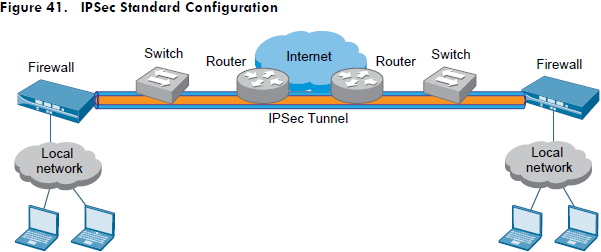
Palo Alto Network firewalls do not support policy-based VPNs. Firewalls that support route-based Firewalls: Palo Alto Firewalls, Juniper SRX, Juniper Netscreen, and Checkpoint.Proxy-IDs are configured as part of the VPN setup.The remote end of the interesting traffic has a route pointing out through the tunnel interface.The IPSec tunnel is invoked during route lookup for the remote end of the proxy-IDs.Firewalls that support policy-based VPNs: Juniper SRX, Juniper Netscreen, ASA, and Checkpoint.The polices/access-lists configured for the interesting traffic serve as the proxy-IDs for the tunnels.As there are no tunnel interfaces, we cannot have routing over VPNs.The remote end of the interesting traffic has a route pointed out through the default gateway. The IPSEC tunnel is invoked during policy lookup for traffic matching the interesting traffic.In case the Availability Zone associated with the Tunnel goes down, PA will remove the policy from PBF and the traffic will be sent out via the second tunnel.Difference between policy-based VPNs and route-based VPNs are: Please create 2 x PBF policies and adjust zone/interface accordingly. Policy-Based Forwarding (PBF) allows you to override the routing table, and specify the outgoing or egress interface based on specific parameters such as source or destination IP address, or type of traffic. When the tunnel monitor reaches its threshold, the policy is removed, and the backup policy becomes active. We bind the tunnel monitor profile to this policy. To allow for failover between tunnels, we use PBF. monitor profile Policy Based Forwarding (PBF) In both cases, the monitor profile is used to specify an action to take when a resource (IPSec tunnel or next-hop device) becomes unavailable.

This is done by creating a tunnel monitor profile in Palo Alto networks device.Ī monitor profile is used to monitor IPSec tunnels and to monitor a next-hop device for policy-based forwarding (PBF) rules. If there is a problem with one of the tunnels, we would want to failover the traffic to the second tunnel. Static routing does not allow for failover of traffic between tunnels. The IPSec tunnel configuration allows you to authenticate and encrypt the data as it traverses the tunnel. You can also assign the interface to the appropriate Virtual Router and Zone. ike gateway 1 ike gateway 2 Tunnel InterfaceĬreate 2 x Tunnel interfaces and set the MTU to 1427. We also need to select the IKE profile created in the first step.

The peers must also negotiate the mode, in our case main mode.

PA and AWS use pre-shared keys to mutually authenticate each other. Each peer must have an IP address assigned. Two Security devices or Firewalls that initiate and terminate VPN connections across the two networks are called the IKE Gateways. The IPSec profile defines the encryption, authentication, and IPSec mode parameters. Please note, these sample configurations are for the minimum requirement of AES128, SHA1, and DH Group 2. Palo Alto Configuration IKE Crypto ProfileĬreate supported ISAKMP encryption, authentication, Diffie-Hellman, lifetime, and key parameters. To create a new VPN connection, go to VPC and choose S ite-to-Site VPN connection in the navigation pane.

#Palo alto networks vpn between srx and how to
In this blog post I will show you how to configure site-to-site VPN between AWS VPC and Palo Alto Firewall.


 0 kommentar(er)
0 kommentar(er)
